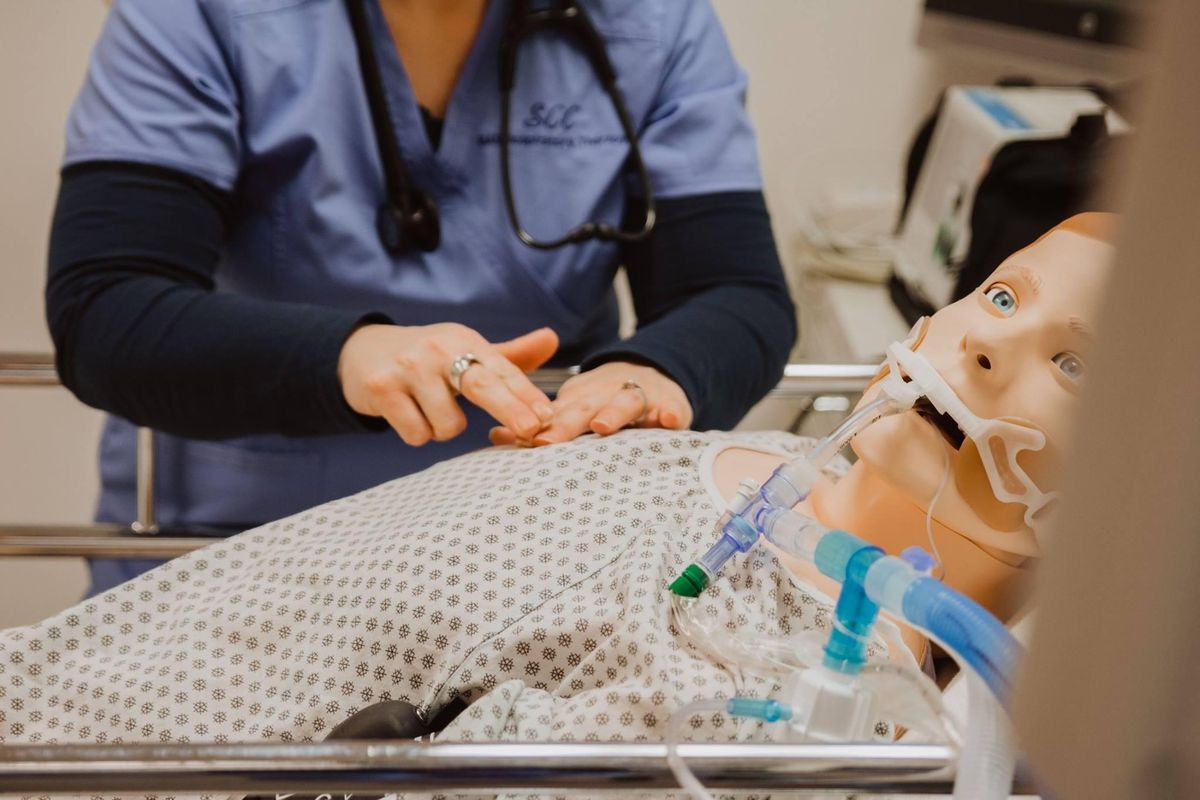Local respiratory therapists help fight war on COVID-19

Ventilators are mentioned often in critical care cases for COVID-19 patients. Talked about less are the respiratory therapists who run those devices and work with doctors and nurses on the front lines.
Earl Moore, who lives in Spokane, said the state has about 3,000 registered respiratory therapists. Moore is semiretired and still works part time in home health care. She is past state president of the Respiratory Care Society of Washington.
“You hear a lot of talk that we need more ventilators, but respiratory therapists are the ones who manage the ventilators,” Moore said. “The doctors give us the orders, but respiratory therapists are part of a team in the hospital working with the doctor and nurses.”
Mechanical ventilators help patients breathe or breathe for them.
Generally, COVID-19 causes a shortness of breath with a cough and other symptoms. Although a majority of people with COVID-19 experience milder symptoms, some develop severe shortness of breath and become critically ill.
Among hospitalized patients who develop worsened COVID-19 symptoms, some go into severe respiratory distress and require a ventilator.
Regionally, health care workers have done much planning for COVID-19 care, said Mary Kay Clark, a respiratory therapy manager at Providence Holy Family Hospital.
“I think we are well positioned with ventilators,” Clark said. “If we did get a run on ventilators, it would cause a strain in having enough respiratory therapists.”
However, Providence has done cross-training of other staff with certified nurse anesthetists trained to use ventilators as well, she said.
Learning to run ventilators requires at least a full year of training during a four-year educational program, said Chris Striggow at Spokane Community College. SCC has a bachelor of applied science four-year respiratory therapy program, which is scheduled to graduate 12 students in June.
Striggow is the program director and an instructor. He said the professional group is a crucial part of the health care team for patients with respiratory issues.
“It’s very common for us to work with a physician, registered nurses and pharmacists for a patient’s care” in a hospital, Striggow said.
A majority of respiratory therapists work in a hospital, but some are employed in outpatient physician offices, long-term care facilities and for home health care companies.
Respiratory therapists train to help patients who have heart and lung diseases, often for those who have trouble breathing from chronic respiratory disease such as emphysema. Patients range from premature infants to the elderly.
The work also requires managing other equipment such as artificial airway devices, along with the ability to do testing and assessments. Moore said she uses medical devices that include one for cough assist and a vibrating vest to mobilize secretion.
However, it’s operation of ventilators that has a spotlight today.
Last August, Michele Pedicone left Seattle and moved to New York to teach in the respiratory education department for SUNY’s Upstate Medical University. She’d worked in Seattle-area hospitals during her career, and she’s a friend of Moore.
After New York hospitals received a wave of patients sickened by the novel coronavirus, Pedicone signed papers recently to return to work. Before her scheduled March 30 start, Pedicone talked to media, including “CBS This Morning,” about her occupation’s role in the fight against COVID-19.
“A lot of them wanted to do a personal story about someone going back into the front lines and the value of a respiratory therapist,” said Pedicone by phone on March 26.
“When you talk about ventilators, you need someone who can run ventilators. It takes several years to learn how to do that safely,” she said.
Respiratory therapists know how to assess patients and help determine the best type of ventilation, Pedicone said. “Not all ventilators are the same,” she said. “Not all patients are the same. There is different lung damage, different diseases.”
She also has witnessed how difficult New York was hit with COVID-19 cases with more expected to come.
“As respiratory therapists, we are in the front line of this war on coronavirus. We’re there when you take your first breath, and we’re there when you take your last breath,” she said.
“We work as a team with the doctor and the nurse and any other health care provider who needs to be there at the time.”